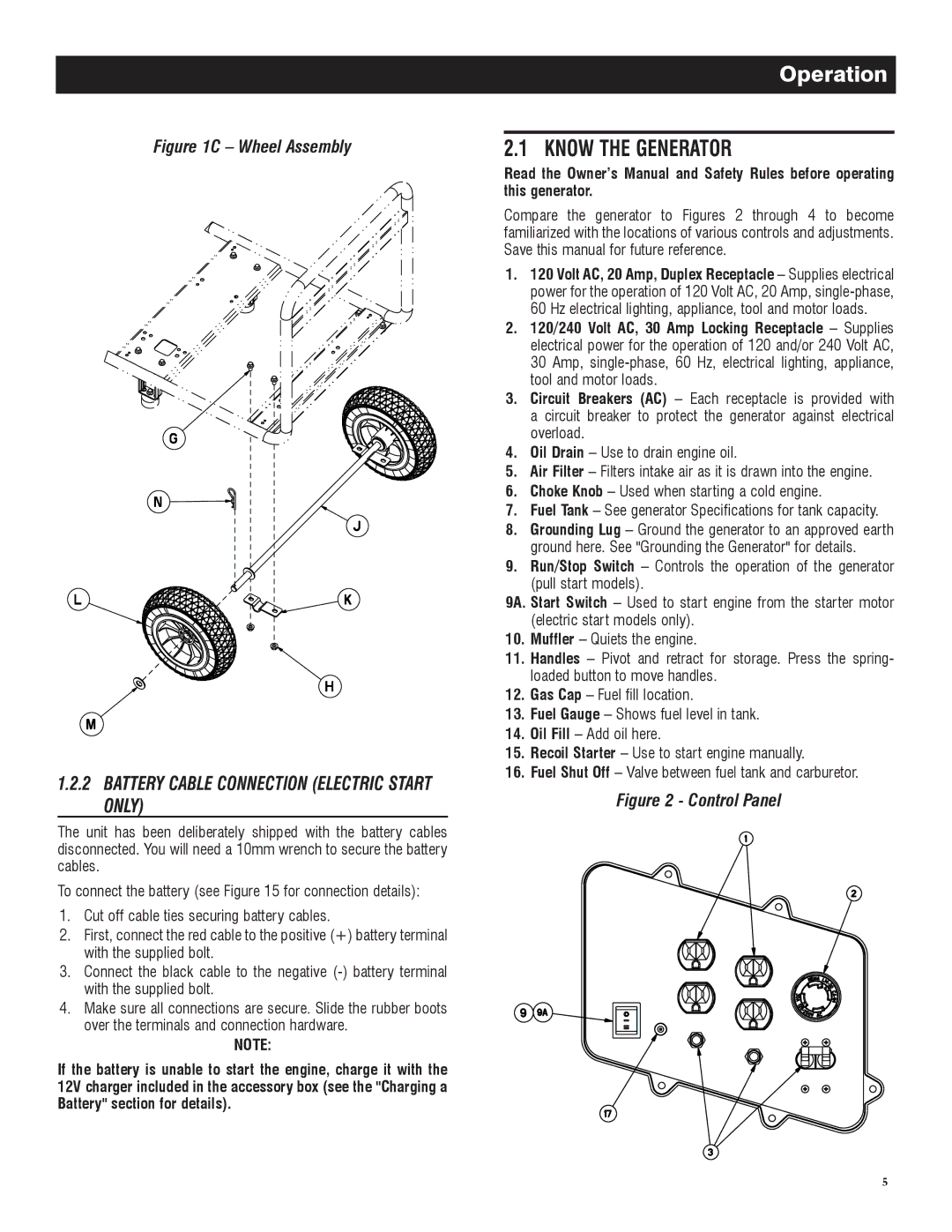
Figure 1C Wheel Assembly
The unit has been deliberately shipped with the battery cables disconnected. You will need a 10mm wrench to secure the battery cables.
To connect the battery (see Figure 15 for connection details):
1.Cut off cable ties securing battery cables.
2.First, connect the red cable to the positive (+) battery terminal with the supplied bolt.
3.Connect the black cable to the negative
4.Make sure all connections are secure. Slide the rubber boots over the terminals and connection hardware.
NOTE:
If the battery is unable to start the engine, charge it with the 12V charger included in the accessory box (see the "Charging a Battery" section for details).
Operation
Read the Owner’s Manual and Safety Rules before operating this generator.
Compare the generator to Figures 2 through 4 to become familiarized with the locations of various controls and adjustments. Save this manual for future reference.
1.120 Volt AC, 20 Amp, Duplex Receptacle – Supplies electrical power for the operation of 120 Volt AC, 20 Amp,
2.120/240 Volt AC, 30 Amp Locking Receptacle – Supplies electrical power for the operation of 120 and/or 240 Volt AC, 30 Amp,
3.Circuit Breakers (AC) – Each receptacle is provided with a circuit breaker to protect the generator against electrical overload.
4.Oil Drain – Use to drain engine oil.
5.Air Filter – Filters intake air as it is drawn into the engine.
6.Choke Knob – Used when starting a cold engine.
7.Fuel Tank – See generator Specifications for tank capacity.
8.Grounding Lug – Ground the generator to an approved earth ground here. See "Grounding the Generator" for details.
9.Run/Stop Switch – Controls the operation of the generator (pull start models).
9A. Start Switch – Used to start engine from the starter motor (electric start models only).
10.Muffler – Quiets the engine.
11.Handles – Pivot and retract for storage. Press the spring- loaded button to move handles.
12.Gas Cap – Fuel fill location.
13.Fuel Gauge – Shows fuel level in tank.
14.Oil Fill – Add oil here.
15.Recoil Starter – Use to start engine manually.
16.Fuel Shut Off – Valve between fuel tank and carburetor.
Figure 2 - Control Panel
5
